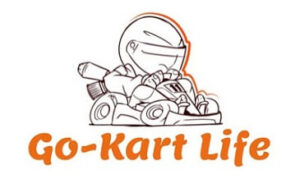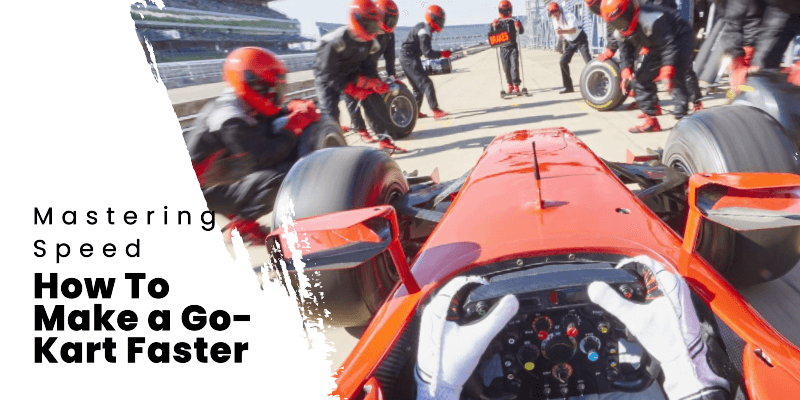Ready to dominate the track and leave your competition in the dust? Your trusty go-kart is more than a ride; it’s a canvas for speed, a machine begging to be sculpted into a champion. This guide unlocks the secrets to unleashing your go-kart’s hidden potential. It transforms it from a casual cruiser to a corner-carving, straight-devouring asphalt assassin.
Optimize Your Go-Kart Engine
Your go-kart’s engine is the beating heart of your speed demon. While a well-maintained engine is good, a strategically tuned one can shave seconds off your lap times and leave the competition in the dust. Here’s how to unlock your engine’s hidden potential:
1. Boost Your Go-Kart’s Engine Power
- Upgrade to a higher-horsepower engine: This is the ultimate performance boost, but consider it carefully. Match the engine’s power to your track type and driving style. For technical tracks, a smaller power increase might be more beneficial. Pairing it with weight reduction could be helpful. Bigger horsepower needs bigger fuel bills and maintenance demands.
Tools: Engine removal tools, engine hoist (optional), wrenches, sockets, torque wrench.
Safety: Follow manufacturer guidelines for engine removal and installation. Disconnect the battery before working on the engine.
2. Upgrade to High-Flow Air Filters
- Swap the stock air filter for a high-flow version: More air means more power! High-flow filters let your engine gulp in oxygen, boosting combustion and squeezing out extra ponies. Just remember, these filters need more frequent cleaning.
Tools: Screwdrivers, pliers, replacement air filter.
Safety: Ensure the new filter seals properly to prevent dust and debris from entering the engine.
3. Install a High-Performance Exhaust
- Install a performance exhaust system: Ditch the restrictive stock exhaust for a smoother-flowing header and muffler combo. This improves power output and adds a satisfying growl to your engine. Check track regulations for noise limitations before upgrading.
Tools: Wrenches, sockets, torque wrench, exhaust sealant.
Safety: Wear gloves and work in a well-ventilated area. Let the engine cool down before touching the exhaust components.
4. Maintain Your Engine for Peak Power
- Stick to your service schedule: Regular oil changes, spark plug replacements, and air filter cleaning keep your engine healthy and powerful. A well-maintained engine runs smoother, delivers consistent power, and avoids costly breakdowns.
Tools: Basic hand tools, oil filter wrench, spark plug socket.
Safety: Dispose of used oil and spark plugs responsibly.
Reduce Excess Weight
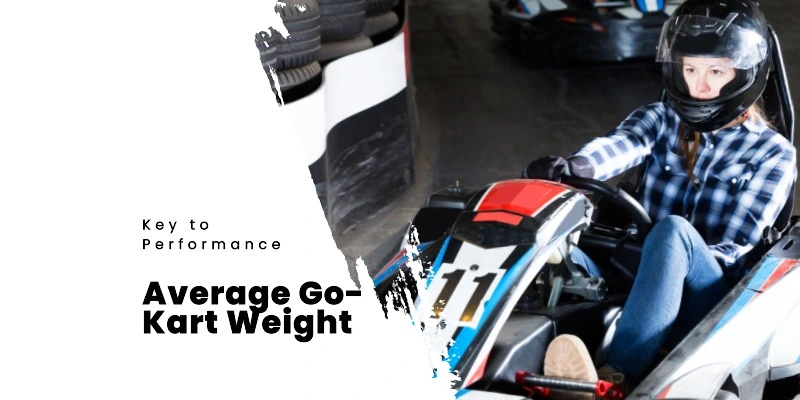
If power is the heart of your go-kart, weight is its anchor. Every ounce you shed translates into quicker acceleration, sharper handling, and faster lap times. Here’s how to make your go-kart a lean, mean, cornering machine:
1. Remove Unnecessary Parts
- Identify non-essential parts: Scrutinize your go-kart for any components that aren’t crucial for safety or performance. Consider removing items like:
- Excess bodywork (fairings, fenders)
- Unnecessary accessories (cup holders, storage compartments)
- Heavy seat cushions
- Decorative items
Tools: Screwdrivers, wrenches, pliers, cutting tools (if necessary).
Safety: Prioritize safety over weight reduction. Never compromise structural integrity or essential components.
2. Install Lighter Parts
- Substitute heavy materials: Replace heavy steel parts with lightweight alternatives like aluminum or composite materials:
- Seat frames
- Steering wheels
- Wheel hubs
- Engine mounts
- Frame components (if compatible with your model)
Tools: Varies depending on the specific parts being replaced.
Safety: Ensure compatibility and structural integrity when making material substitutions. Consult a qualified mechanic if unsure.
3. Shed Weight for Go-Kart Speed
- Optimize driver weight (safely): While the focus is on go-kart weight, a lighter driver can also contribute to performance. However, always prioritize personal health and safety. Do not engage in extreme weight loss measures. Instead, focus on maintaining a healthy weight through proper diet and exercise.
4. Distribute Weight the Proper Way
- Balance is key: Strive for a balanced weight distribution, typically around 40% front and 60% rear. Adjust seat position or ballast placement to achieve optimal balance.
Tools: Ballast weights, seat adjustment tools.
Safety: Ensure ballast weights are securely fastened to prevent them from becoming loose during driving.
Optimize Your Go-Kart Aerodynamic
Air resistance is a go-kart’s arch-nemesis. It saps your precious horsepower and slows you down. But fear not, aspiring aerodynamic alchemists! By tweaking your go-kart’s shape and posture, you can turn the wind into an ally. This will grant you sharper cornering and blistering straightaway speeds.
1. Optimize Aerodynamics for Racing
- Streamline the bodywork: Reduce frontal area and smooth out airflow by removing unnecessary fairings and rounding sharp edges. Consider lightweight aerodynamic kits designed for your specific go-kart model.
Tools: Screwdrivers, wrenches, cutting tools (if necessary).
Safety: Ensure modified bodywork does not obstruct essential components or visibility.
2. Smooth Your Go-Kart’s Underbody
- Craft a flat underbody: A flat bellypan helps channel air under the go-kart, creating a suction effect that improves downforce and cornering stability. Some advanced kits offer adjustable underbody panels for fine-tuning.
Tools: Depending on the underbody design, installation tools may vary.
Safety: Ensure the underbody pan doesn’t scrape the ground during cornering or bumps.
3. Add Downforce with Rear Wings (Advanced)
- Add rear wings for downforce: Consider installing a rear wing on high-speed tracks. This generates downforce, pushing the go-kart into the track for increased grip and stability. Choose a wing size and angle appropriate for your track and driving style.
Tools: Wrenches, wing adjustment tools.
Safety: Improper wing setup can negatively impact handling and stability. Seek professional guidance for advanced aerodynamic modifications.
4. Adopt an Aerodynamic Driving Posture
- Driver positioning affects drag: Adjust your driving position to minimize your frontal area. Tuck your elbows, lean forward slightly, and avoid excessive head movement. Practice a low, aerodynamic posture for optimal airflow.
Tools: None, just self-awareness and practice.
Safety: Maintain proper visibility and control while adjusting your driving position.
Optimize Tires and Wheels
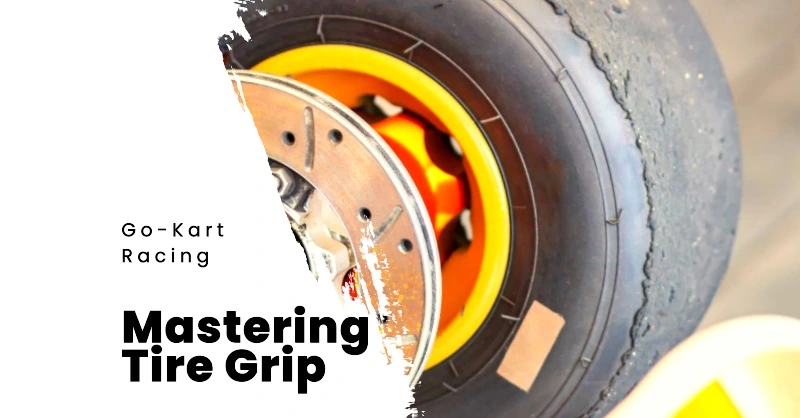
Your go-kart’s connection to the asphalt lies in its tires and wheels. Choosing the right rubber and adjusting their settings can be the difference between a sluggish ride and a razor-sharp lap time. Let’s explore the secrets of tire and wheel alchemy:
1. Choose the Right Tires for Grip
- Grip vs. Roll: The holy grail is finding the balance between grippy tires that offer amazing cornering and smoother rolling tires that eat up straights. Consider:
- Track surface: Slick tires for smooth tracks, treaded tires for rougher surfaces.
- Weather conditions: Wet weather tires for rain, dry weather tires for optimal grip.
- Driving style: More aggressive tires for pushing limits, balanced tires for all-around performance.
To learn more about tire grip read Mastering Tire Grip in Go-Kart Racing for Optimal Performance.
2. Find the Right Pressure for Better Tire Grip
- Fine-tuning tire pressure: Adjusting air pressure significantly impacts handling and lap times. Higher pressure reduces rolling resistance for straights. Lower pressure increases contact patch for corners. Experiment based on track conditions and driving style.
Tools: Tire pressure gauge, air pump.
Safety: Never exceed the maximum recommended tire pressure. Check pressure before each drive to ensure safe operation.
3. Align Wheels for Perfect Handling
- Straight and True: Ensure proper wheel alignment for optimal handling and tire wear. Look for uneven tire wear, steering pull, or vibration as indicators of misalignment.
Tools: Alignment tools (professional alignment recommended).
Safety: Misaligned wheels can negatively impact handling and lead to accidents. Get your go-kart professionally aligned if unsure.
4. Switch to Lightweight Wheels
- Lightweight wheels: Consider upgrading to lighter wheels to reduce unsprung weight. This improves acceleration, handling, and responsiveness.
Tools: Jack, wheel removal tools.
Safety: Ensure proper wheel fitment and torque specifications when upgrading wheels. Use high-quality lug nuts and check them regularly for tightness.
Read the Ultimate Guide to Go-Kart Tire Pressure & Performance for details.
Adjust Gear Ratios and Drivetrain
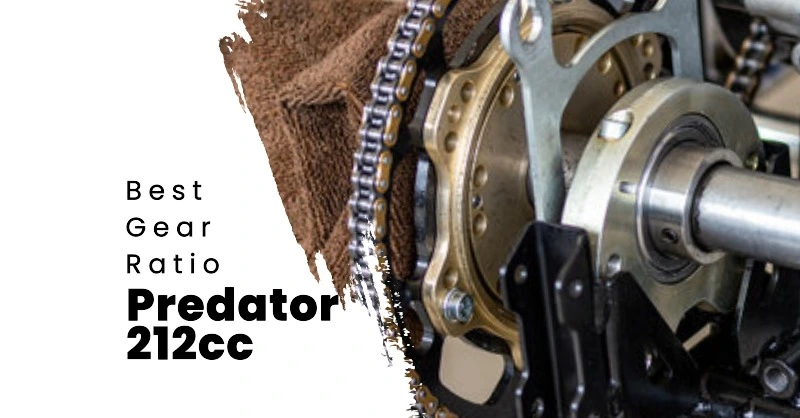
The engine is crucial for your go-kart. The transmission and drivetrain control power and how the kart moves. By learning about and adjusting gear ratios and drivetrain parts, you can make your go-kart faster and more precise. This process is like turning your go-kart into a finely-tuned instrument of speed.
1. Shifting Gears
- Understanding gear ratios: Each gear in your transmission has a specific ratio. This ratio determines the relationship between engine RPM and wheel speed. Lower gears create high torque for powerful acceleration. Higher gears translate engine power into faster top speeds.
2. Tweak Gear Ratios for Speed
- Choosing the right gear for the situation: Choose the gear that optimizes engine power for the specific track segment. Use lower gears for tight corners and uphill climbs, higher gears for long straights and open tracks. Practice smooth gear changes for optimal power delivery and minimize time spent shifting.
3. Master Your Go-Kart’s Clutch
- Mastering the clutch: A well-maintained and properly adjusted clutch ensures smooth gear changes and efficient power transfer. Learn proper clutch engagement and disengagement techniques to minimize wear and tear and maximize performance.
Tools: Basic hand tools for clutch adjustments.
Safety: Never engage the clutch while the engine is running. Always come to a complete stop before shifting gears.
4. Maintain the Drive Chain
- Maintaining the drivetrain: A clean and properly lubricated chain reduces friction and maximizes power transfer. Regularly clean and lubricate your drive chain according to manufacturer recommendations.
Tools: Chain cleaning tools, chain lubricant.
Safety: A worn or damaged chain can break and cause accidents. Inspect your chain regularly for wear and replace it if necessary.
5. Adjust Sprockets for Better Performance (Optional)
- Gear changes: For experienced racers, swapping sprockets to modify overall gear ratios can further optimize performance for specific tracks. Consult performance manuals and experienced mechanics before undertaking advanced drivetrain modifications.
For more insight read What is the Best Gear Ratio for Predator 212cc – Expert Insights.
Upgrade Your Brakes
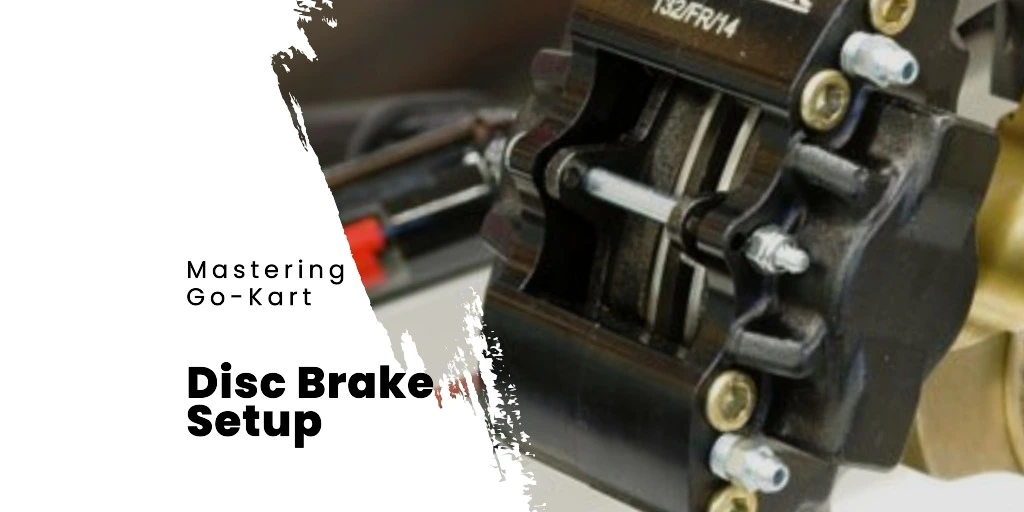
Most go-kart enthusiasts obsess over horsepower and acceleration. However, the oft-neglected brakes play a crucial role in shaving seconds off your lap times and safeguarding your well-being. In this section, we’ll delve into the art of brake alchemy. You will learn to transform your stoppers from anchors into finely tuned precision instruments of control.
1. Keep Brakes in Top Condition
- Clean and lubricate: Regularly inspect and clean your brake pads and discs to ensure optimal performance. Lubricate caliper components to prevent binding and improve responsiveness.
Tools: Basic hand tools, brake cleaner, caliper lube.
Safety: Always wear gloves and eye protection when working on your brakes. Follow proper safety procedures to avoid fluid contamination and ensure safe operation.
2. Select Optimal Brake Pads
- Choosing the right brake pads: Different pad materials offer varying levels of bite and fade resistance. Choose aggressive pads for high-speed tracks and softer pads for rougher surfaces or endurance racing.
Tools: Basic hand tools for pad replacement.
Safety: Ensure proper pad compatibility with your brake system and install them according to manufacturer guidelines.
3. Change Brake Fluid Regularly
- Bleed and replace brake fluid: Over time, brake fluid absorbs moisture, reducing its effectiveness. Regularly bleed and replace your brake fluid to maintain optimal braking performance.
Tools: Bleed kit, fresh brake fluid.
Safety: Brake fluid is corrosive. Wear gloves and eye protection when handling it. Dispose of used fluid responsibly.
4. Fine-Tune Your Brake Pedal
- Fine-tuning the brake pedal: Adjust the free play and feel of your brake pedal to suit your preference. A firmer pedal offers more immediate response, while a softer pedal might be easier to modulate for smoother braking.
Tools: Basic hand tools for brake pedal adjustment.
Safety: Ensure proper pedal travel and avoid overadjusting, which can lead to premature brake lockup.
5. Braking Techniques
- Learn to threshold brake: Avoid slamming on the brakes, which can lock up the wheels and decrease control. Instead, apply progressively increasing pressure until the wheels are on the verge of locking, maximizing deceleration without losing traction.
Safety: Practice threshold braking in a safe environment to develop muscle memory and confidence.
For more, read Mastering the Go-Kart Disc Brake Setup.
Test and Tune
You’ve poured over technical tips, meticulously applied modifications, and now it’s time to witness the fruits of your labor. This final section delves into the crucial steps of practical testing and tuning, where theory transforms into tangible speed gains and your go-kart becomes a finely tuned instrument of asphalt domination.
1. Analyze Every Lap for Insights
- Embrace the stopwatch: Ditch guesswork and rely on objective data. Before making any changes, record your lap times on a reference track. After each modification, repeat the runs and compare times. Data reveals what works, what doesn’t, and guides your tuning decisions.
Tools: Stopwatch, lap timing app (optional).
2. Continuously Upgrade Your Go-Kart
- Change one variable at a time: Avoid the “shotgun approach” of making multiple changes simultaneously. Focus on testing one modification at a time, allowing you to pinpoint its impact on performance. This systematic approach reduces confusion and facilitates effective tuning.
3. Track Lap Times for Progress
- Don’t underestimate small adjustments: While major modifications like engine upgrades can create significant improvements, remember that the devil is often in the details. Tweaking tire pressures, adjusting gear ratios, or refining your driving line can shave crucial seconds off your lap times.
4. Analyze and Adapt
- Learn from every lap: After each test session, analyze your data and driving sensations. Did the change improve lap times? How did it impact handling or stability? Use this feedback to refine your modifications and approach the next test session with a clear plan.
5. Achieve Big Wins with Small Tweaks
- The journey never ends: Remember, tuning is an ongoing process. Never be satisfied with your current setup. Embrace experimentation. Explore new modifications. Constantly seek ways to optimize your go-kart’s performance. The quest for speed is a never-ending journey, and the thrill of shaving off milliseconds is what fuels the passion of every true racer.
Conclusion
Using these simple testing and tuning steps, you can make your go-kart much faster and more fun to drive. You’ll be able to turn corners sharply and speed down straight paths, outperforming others. Remember, improving speed takes careful measurement, hard work, and a love for challenges. So, get your stopwatch, go to the track, and see how fast your go-kart can go!

Goran, an experienced go-kart racer, fuels GoKartLife.com with his passion and expertise. He offers valuable insights and tips for fellow enthusiasts, fostering the growth of the go-kart community. Join Goran at GoKartLife.com and immerse yourself in this exhilarating sport.
